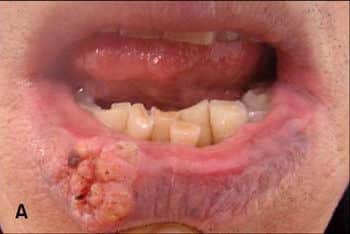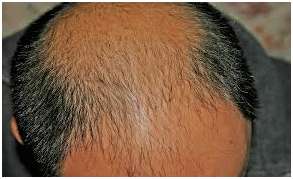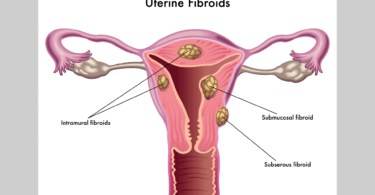Epithelioma of the Lip – The responsibility for the cure of the following case is divided between three physicians. The whole story may interest the reader. In 1886, a gentleman, sixty-three years of age, was obliged to relinquish to a considerable extent his active literary pursuits on account of neurasthenia. His sleep was poor, he could not concentrate his thoughts long at a time without headache, beginning in the nape of the neck and extending upwards to the vertex, with coldness across shoulders and vertigo, which was increased by looking up and around. He had an indolent ulcer upon the outer surface of the left leg, flat, shallow, with bluish-white base and clearly-cut edges. Every tyro in homoeopathic practice knows that the prescription was silica in potency, and believes my statement that at the end of two years of medical treatment his strength was nearly restored. It ought to be — but probably is not — superfluous to add that no medicated applications were made to the ulcer. Sole reliance was placed upon internal medicine. He lived in Boston, and much prescribing was done by means of correspondence.
Then it was — headaches gone, ulcer healed, vigor in great measure restored and work resumed — that a hard, rough, cracked, sensitive, painful, slightly discolored tumor developed in the border of the left side of the lower lip. Epithelioma stared me in the face. I turned to page 379 of Vol. IX. Guiding Symptoms, and read, among much other relevant and interesting text, “Swelling of lower lip.” “Cancer of lower lip.” Silica continued to be the remedy. I gave a dose very high. It relieved the situation somewhat. Relatives and friends took alarm and held anxious conferences. Excision, plasters, escharotics, and nostrums were discussed and urged. It seemed that control of the case could be maintained better by closer personal contact between physician and patient. I therefore asked to have Dr. William P. Wesselhoeft, of Boston, take the case. He did so and now kindly consents to let me quote him.
After consulting his books, he writes :
“I find that in 1888 he received, February 18, silica cm., one dose.” During his absence from home, which soon followed, Dr. Wesselhoeft assigned the case to his colleague. Dr. James B. Bell, who writes :
“I have no doubt of the diagnosis from the macroscopic appearance. I treated him from June 18, 1888, to December 29, 1891, and the remedies were Clematis and Dulcamara, at long intervals and in the highest potencies. The indications for Clematis were simply ‘Cancer on the lip,’ and for Dulcamara, the warty character of the growth. I do not remember that there were any modalities. He had occasional interruption of the treatment for more or less acute conditions, but there was gradual progress toward a cure, and the remedies were not repeated as long as progress was discernible. As I remember, the cure was complete and continued until his death.”
Dr. Bell’s recollection is good. The subject remained well until 1896, when he died suddenly of cerebral haemorrhage.





